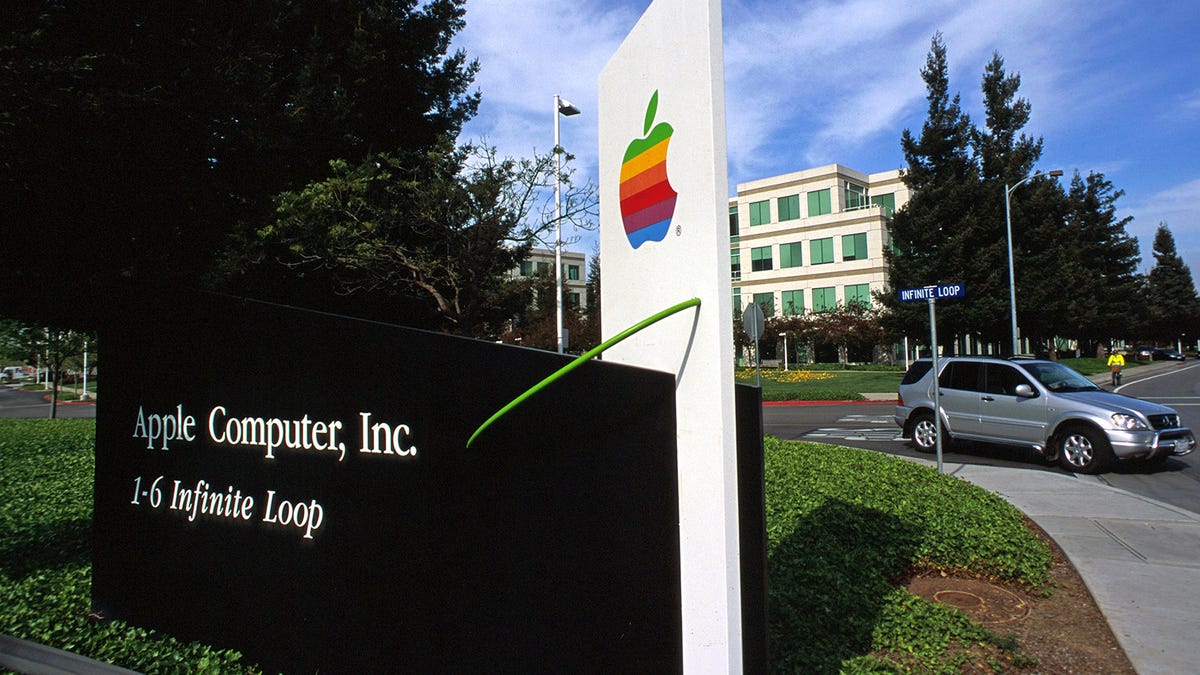Apple Seems Uncertain About its Self-Driving Car Project

No official image of the Apple Car exists because Apple likes to pretend it doesn’t, so here’s a very old photo of a Mercedes ML near the company’s old headquarters.Photo: David McNew/Newsmakers (Getty Images)
While we rubes may never get to see an Apple Car, the people working on it within the tech company obviously get to see it all the time. Not Tim Cook, though. According to a new report that spills a number of details on Project Titan, Apple’s eight-year odyssey to realize an autonomous vehicle, the CEO has kept his distance from the endeavor. And if that didn’t raise a few flags about the state of the still-to-be-seen “Apple Car,” the rest of the report paints a pretty clear picture that things could be going a lot better.
The latest on the Apple Car arrives to us courtesy of The Information’s Wayne Ma. Some of it is predictable: The individuals developing Titan seem to lack a clear vision of what the end result should look like, likely due to the fact that leaders have joined and departed the endeavor faster than a well-used iPhone battery. At the moment, Kevin Lynch, formerly in charge of developing the software behind the Apple Watch, is at the helm.
Lynch replaced Doug Field, who instilled an “era of stability” at Titan, according to one anonymous Apple employee quoted in The Information’s story. Tesla had poached Field from Apple, who poached him back from Tesla. He remained at Apple from 2018 until last year, when he left for Ford.
The uncertain vibe inside the team seems to be exacerbated by evident skepticism from outside. Cook “rarely visits” the Titan team in Santa Clara, per another employee, and doesn’t seem to follow their progress as closely as he could. Craig Federighi — Apple’s software engineering chief perhaps best known for making weed jokes when introducing new versions of the company’s desktop operating system — has reportedly indicated to fellow executives that he’s not terribly excited by the project. Which I can sort of understand, because even if Titan doesn’t work out, Apple will make its presence known in all of our future cars in one way or another.
The actual shape and styling of the Apple Car have been shrouded in mystery since the beginning. Thanks to this report, we may now have some insights on the car’s projected design. The vehicle would theoretically incorporate four seats, two row facing each other, and those seats might recline flat for sleeping. As Apple is eyeing full autonomy, the final product wouldn’t have a steering wheel or pedals. The shape of the greenhouse is said to be roughly circular — those in the know compared it to the roofline of a Volkswagen Beetle — and designers are interested in implementing a cargo space that raises and lowers for “easier access.”
The final product could end up looking very strange. Much like how Apple embraced the notch created by the TrueDepth camera atop many of its iPhones, the company might use the car’s self-driving hardware as styling features, rather than masking the equipment. Former design chief Jony Ive, who continues to work with Apple as a consultant, reportedly suggested that the company “lean into the weirdness of the vehicle’s design and not try to hide its sensors.”
For the moment, though, Apple seems to be more fussed with getting the self-driving part of the equation right, which makes sense. The company has been conducting all of its testing over the last several years in Lexus SUVs. While they seemed to perform well on a test last summer in Montana, the prototypes began to commit more errors closer to home — one of which, reportedly, almost resulted in a jogger getting run over. From The Information:
Inside Apple, executives hailed the [Bozeman, Montana] demonstration as a success. The vehicles showed they could drive without relying on highly detailed, three-dimensional road maps, which most rival self-driving-car programs require. Titan managers hoped to ditch these costly and unscalable high-definition maps en route to one day building and selling a fully automated car that could work almost anywhere in the world without a steering wheel or pedals, making Apple responsible for the car’s behavior and the safety of its occupants.
The good vibes following the Bozeman demo didn’t last long. Apple’s test vehicles, which are modified Lexus SUVs, struggled to navigate streets near its Silicon Valley headquarters without the maps, smacking into curbs and sometimes having trouble staying in their lanes while crossing intersections, according to two people who worked on the program. And earlier this year, a test vehicle nearly hit a jogger who was crossing the street and had the right of way, one of these people said.
Apple’s software couldn’t determine whether the jogger was a stationary or moving object. A human driver inside the prototype had to slam on the brakes, sure that the car would have hit the pedestrian if they didn’t intervene.
The company reportedly grounded the Titan fleet until it was able to address the software glitch and add that particular crosswalk to its database. However, the Titan team seems to want to achieve autonomy without relying on perfect maps. While that’s the direction the industry is headed in, it’s still a very tricky task today.
As it stands, that’s pretty much everything that has recently come to light regarding the Apple Car. And while it doesn’t necessarily align with what our inside sources have told us, Apple’s habitual secrecy around this project prevents it from confirming or denying anything, meaning that, theoretically, every rumor about the Apple Car is equally valid.



